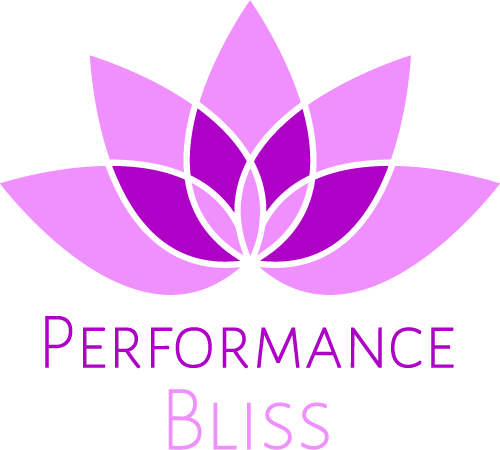Effective team communication is the backbone of any successful organization. When communication is clear, constructive, and consistent, teams work better together, projects move forward smoothly, and employees feel more engaged. However, fostering seamless communication can be a challenge, particularly for growing teams. This is where employee feedback software steps in, not only helping to bridge communication gaps but also promoting collaboration, trust, and a culture of continuous improvement.
In this article, we’ll explore how employee feedback software transforms team communication and discuss the critical role it plays in enhancing collaboration, aligning team goals, and creating an open, transparent workplace environment.
The Importance of Feedback in Team Communication
Before delving into the specific ways employee feedback software improves team communication, it’s essential to understand why feedback is a key element of healthy communication. In a well-functioning team, feedback isn’t just an annual event; it’s a continuous loop. Constructive feedback allows team members to improve performance, align their efforts with team goals, and foster a sense of accountability.
When feedback is poorly delivered or inconsistent, it leads to confusion, dissatisfaction, and disengagement. On the other hand, timely, regular, and structured feedback builds trust and keeps everyone on the same page. However, for managers and team leaders, providing this consistent level of feedback can be time-consuming and difficult to manage effectively—especially without the right tools in place.
How Employee Feedback Software Enhances Communication
One of the most significant benefits of employee feedback software is how it transforms feedback from a cumbersome, time-consuming task into an efficient and valuable process. By leveraging technology, teams can provide and receive feedback in a structured, organized manner, ensuring that nothing is lost in translation.
Here are several ways feedback software enhances team communication:
Structured Feedback Processes
One of the primary advantages of using feedback software is that it introduces a consistent, structured approach to giving and receiving feedback. In traditional methods, feedback might come haphazardly, which can leave employees feeling confused about their performance or unaware of improvement areas.
With employee feedback software, managers and employees alike are provided with clear prompts for feedback, making it easier to offer constructive input that directly relates to performance. This structure not only ensures regular communication but also makes sure that feedback is meaningful and focused on specific areas of growth, ultimately improving the quality of communication within teams.
Real-Time Feedback for Immediate Impact
Waiting until the annual performance review to give feedback is no longer sufficient in today’s fast-paced work environments. Employee feedback software allows for real-time feedback, enabling team members to address issues or celebrate successes immediately.
Real-time feedback is a game changer in team communication, as it allows teams to make swift adjustments. Whether it’s recognizing great work or providing constructive criticism, immediate feedback ensures that employees understand what’s working and what needs improvement, promoting quicker resolutions and enhancing team dynamics.
Two-Way Communication Channels
In many organizations, feedback flows only from the top down, making employees feel unheard or undervalued. Employee feedback software creates opportunities for two-way communication, where employees are empowered to share their thoughts and feedback as well.
Through continuous feedback loops, employees can express concerns, share ideas, and provide input on projects, fostering a collaborative team environment. When employees feel they have a voice, it not only improves team communication but also drives engagement, as they are more likely to contribute constructively when they know their input is valued.
Data-Driven Insights for Improved Collaboration
Another major advantage of employee feedback software is its ability to provide data-driven insights into team dynamics and individual performance. This feedback is not just based on subjective opinions but also backed by measurable data.
With these insights, managers can identify patterns in communication—whether there are recurring misunderstandings, areas where certain teams excel, or where further improvement is needed. Armed with this information, managers can take targeted steps to improve communication and foster better collaboration across departments, leading to more effective teamwork and improved outcomes.
The Role of Feedback Software in Building Trust
Trust is a critical factor in team communication. Employees who trust their managers and peers are more likely to be open to feedback and willing to engage in honest conversations. Employee feedback software helps build this trust by promoting transparency.
Transparency in Expectations and Performance
When feedback is shared openly and consistently, it helps eliminate uncertainty. Employees no longer have to guess where they stand or what their manager expects of them. Employee feedback software ensures that feedback is delivered transparently, with clear performance metrics and goals that are shared across the team.
This transparency builds trust within teams, as employees feel that communication is fair, and everyone is held to the same standards. By fostering an environment of trust, feedback software improves not only communication but also overall team morale and cohesion.
Supporting Continuous Development
Feedback software also plays an essential role in continuous employee development. Rather than receiving feedback sporadically, employees get a regular flow of input that guides their personal and professional growth. This continuous feedback cycle helps employees feel supported, as they know their progress is being tracked and recognized.
At Performance Bliss, the goal is to provide managers with tools that not only make giving feedback easier but also facilitate growth conversations that are meaningful. By streamlining the feedback process, teams can focus on development rather than just performance evaluation, leading to better long-term communication.
Creating a Culture of Continuous Feedback
A workplace that values communication also values continuous feedback. One of the hallmarks of employee feedback software is its ability to create a culture where feedback is an integral part of daily work life, rather than an occasional event.
Encouraging Ongoing Dialogue
Rather than waiting for scheduled reviews, employee feedback software encourages ongoing communication between employees and managers. The software makes it easy to give quick, timely feedback, fostering a dialogue that keeps performance, growth, and development at the forefront of every employee’s mind.
This continuous communication not only improves performance but also strengthens the bonds between team members and managers, resulting in a more collaborative, open work culture.
Aligning Feedback with Company Values
Lastly, employee feedback software allows organizations to align feedback with their broader goals and values. Performance Bliss, for example, enables teams to customize feedback forms and evaluations to reflect company objectives.
When feedback is aligned with the organization’s mission, employees can better understand how their work contributes to the bigger picture. This alignment enhances communication by giving feedback a clear purpose and making it more meaningful to the recipient.
Conclusion: Transforming Team Communication with Employee Feedback Software
In today’s dynamic workplace, effective communication is essential for team success. Employee feedback software has proven to be an invaluable tool for enhancing communication and collaboration by providing structured feedback, promoting transparency, and fostering continuous dialogue.
Tools like Performance Bliss not only streamline the feedback process but also create a culture where communication flows freely, and development is prioritized. For teams looking to improve their communication and foster a collaborative environment, investing in employee feedback software is a powerful step toward long-term success.
By transforming how feedback is given and received, this software allows teams to communicate more effectively, fostering stronger relationships, higher productivity, and a more engaged workforce.
Related Reads: Performance & Feedback Insights
Looking for more insights on performance and employee feedback? Check out these articles:


